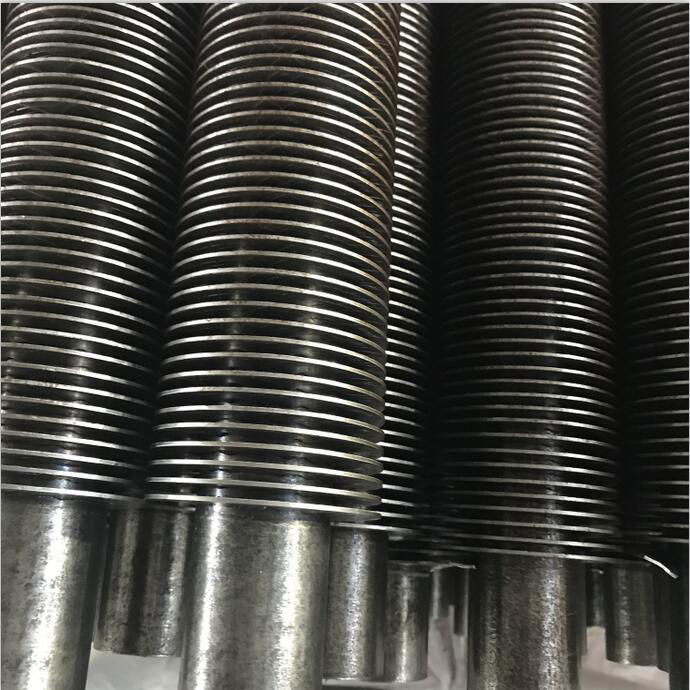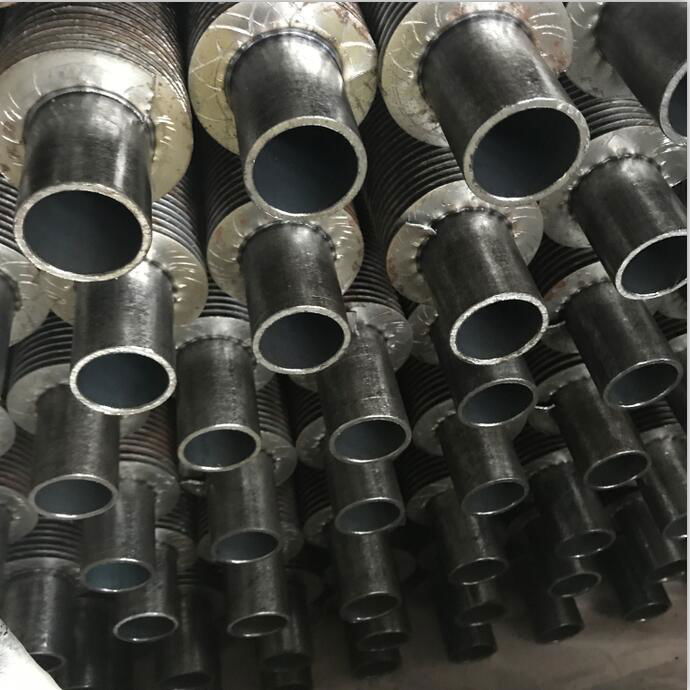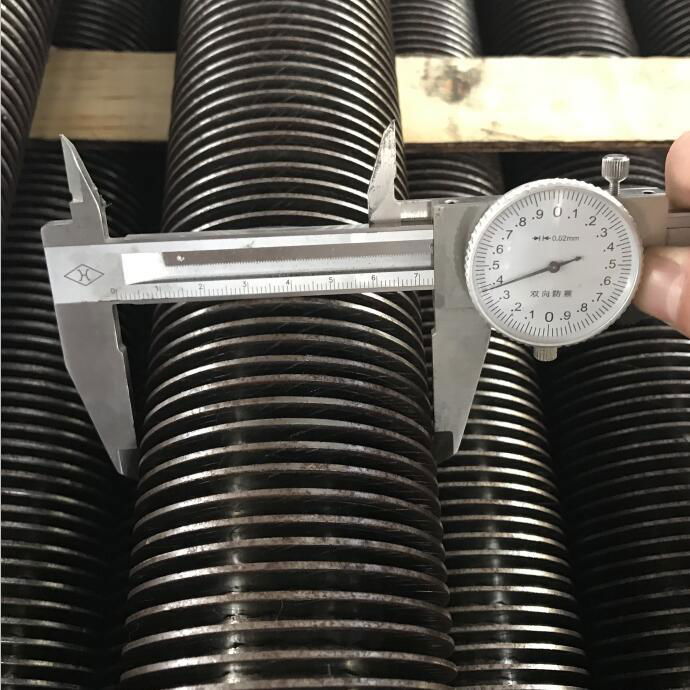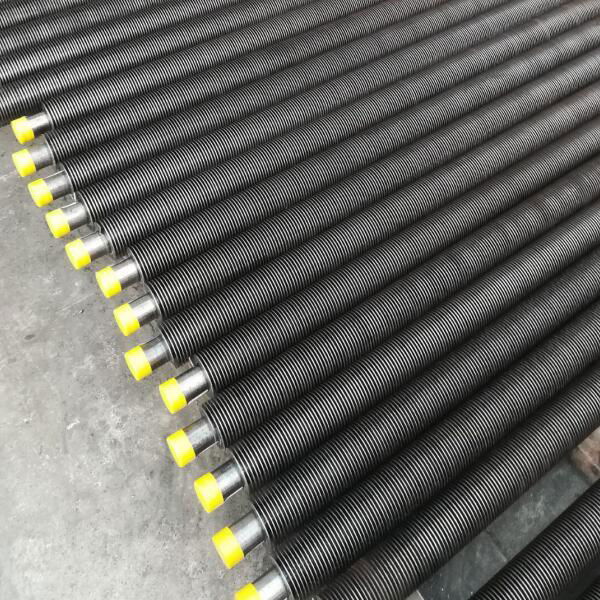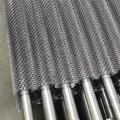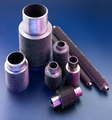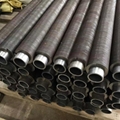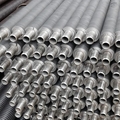A) High frequency welded helical finned tube is a highly efficient heat transfer component, it consists of steel fins wrapped helically around steel pipe , and continuously welded using the high frequency electric current process so as to reduce the flow resistance and the metal consumption, improve the efficiency of heat transfer equipment and operating reliability. The heat transfer energy is more than 6-10 times higher than the bare tube.
Tube material: stainless steel/carbon steel
Fin material: Al, Cu , carbon steel /carbon steel
B) Extruded finned tubes are formed from a bimetallic tube consisting of a base tube and an aluminum muff tube. The fins are formed on a cold rolling process from the wall thickness of the aluminum muff tube. Extruded fins gives very good corrosion protection to the base tube, as the base tube is not visible to the atmosphere in between the fins.
Tube material: carbon steel/ stainless steel/ copper
Fin material: Aluminum
C) KL-type Fin Tube
Fin Materials::Aluminum, Copper
Tube Materials::Core Tube,Carbon steels (ASTM A 179/ A 214, St 35.8,ect.), low-alloy steels, stainless steels, copper-nickel alloys, aluminium bronze, copper, nickel-alloys (Alloy 400, ext.)
Fin Thickness::Min: 300 µ Max: 800µ
Tube Size::12.70mm~50.8mm
Fin Size::7~11.5Fins/Inch Fin Height Max 16mmH
This type of fin has a knurled L shape base and is fixed by pressure on the tube.
Fin Materials: Aluminum, Copper
Tube Materials: No limits
Fin Thickness: Min: 300 µ Max: 800µ
MATERIAL COMBINATIONS
Core Tube
Carbon steels (ASTM A 179/ A 214, St 35.8,ect.), low-alloy steels, stainless steels, copper-nickel alloys, aluminium bronze, copper, nickel-alloys (Alloy 400, ext.), bimetal
Fins: Aluminium ASTM B209 Al 1060; ASTM B209 Al 1100
FIELDS OF APPLICATION
. the petroleum, chemical and petrochemical process industries
. natural gas treatment
. the steel industry: blast furnace and converter systems
. power generation: steam turbine exhaust condensing
- contact condensing with cooling of circulating condensate
- fossil and nuclear power plants
. air conditioning (freon, ammonia, propane)
. incineration of household refuse
. compressor coolers, ect.
MANUFACTURING PROCESS
The manufacturing strip is folded to from an L shape and then wound around the base tube. The feet of the fins are joined together and cover the whole of the finned surface. Both lends are clamped down to avoid unrolling through damage.
ADVANTAGES
Economic This method of manufacturing enables us to place the finning on a very thin-walled tube with is particularly desirable when using noble alloys (titanium, stainless, copper, nickel).
The tube can withstand a temperature of up to 130°C without the risk of atmospheric corrosion or thermal stress. L1 max. = 12 000 mm Fin Thickness = 0,3 - 0,4 mm Fa = Outer Tube Surface Area incl. Surface Area of Fins L2 max. = L1 -2t x = acc. to clients specification Fi = Interior Tube Surface Area per Meter (m2/m) FZR = Uncovered Tube Area between the fins.
